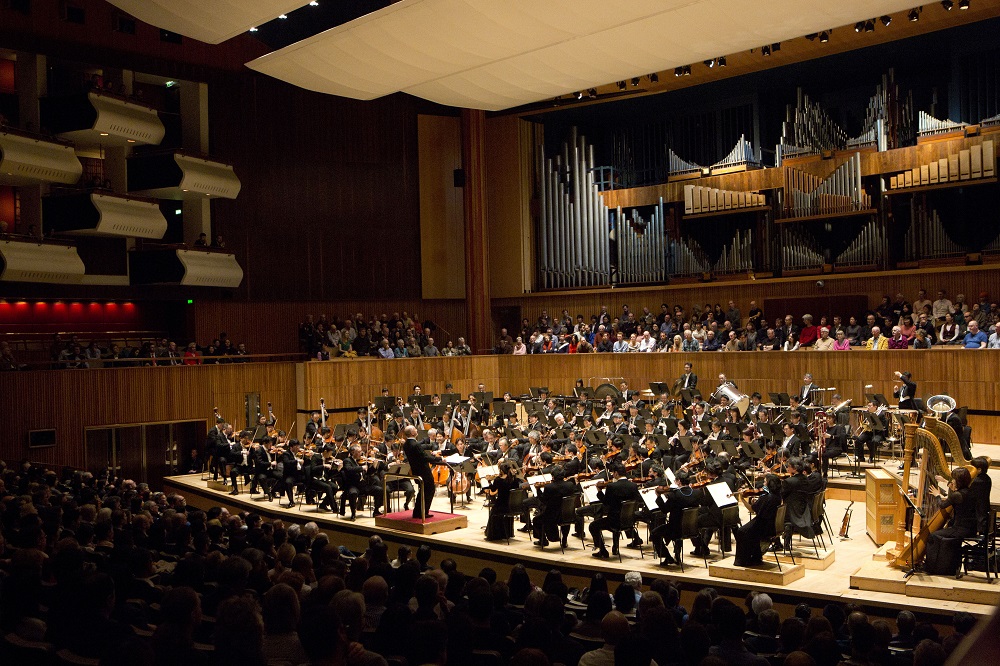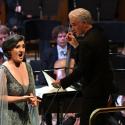Berlin and Vienna Philharmonics; Royal Concertgebouw Amsterdam; NHKSO Tokyo. Would you have thought of putting the Japanese orchestra in the same league as the top Europeans? I certainly wouldn't, at least not until last night. While there isn't the same blended warmth, the sound is never clinical or cold; and the revelation is an incisiveness unlike any other, no doubt encouraged by Chief Conductor Paavo Järvi's digging deep in the amazing march-mania at the heart of the finale in Mahler's Sixth Symphony.
The ocular proof of that hard work could be seen in the physical movement and involvement of so many of the players, above all from one of the front-desk cellists and the first oboist. This was a Mahler Six in which every detail was clearly etched, every phrase flexible but firm of purpose. If that didn't always leave room for the full Mahler gamut, it was a thing of wonder in itself.
Launching the concert was a token gesture towards Japan's best-known composer, Toru Takemitsu. Requiem is a short work by the 27-year-old composer; to be honest, in its going-nowhere angst it could have been written by any number of lesser figures around the middle of the 20th century. But the division of labour, the solos and the effects never sounded less than impressive from the NHK strings.
There were no moments of drift, not a dud bar, in the Mahler. Total heft and focus in the first movement drove both the grim marching and the great sweeping lyric theme purposefully forward, with lower strings holding focus (double basses to the left, in front of the horns, in closest possible league with first violins and cellos). While the high Alpine idyll at the centre of the movement could have been quieter - Festival Hall dryness and clarity tend to compound Järvi's almost relentless precision - the hysterical cavalcade of a coda proved hair-raising.

Straight on, then, to the scherzo as 3/8 action reply of the marching: by that coup, Järvi showed he had no doubt, unlike Mahler himself, that this is where it should be, not third with the Andante in between (as too many, Rattle among them, prefer in ordering the inner movements). Hard not to think of it here as the bad boy's bedroom in Toy Story, with the quacking oboe which tries to hold a tottering course in the middle of all the grotesquerie the doll that says "mama", reassembled after the cataclysm with the head on backwards. Those lowering horns could almost have been impersonating wa-wa mutes in another of the special effects more wonderfully skewed than I've ever heard them.
If the orchestra could have done with a touch more middle-European glow anywhere, a dash of chiaroscuro, it would have to have been in a by no means too slow third movement. If you think it should breathe and billow, this would not be the interpretation for you - driven at the climaxes, but undeniably intense on its own terms. And here, too, was a pairing with a bigger movement, Järvi plunging headlong into the mountain outlines of the first violins in the finale's strange new world, with harps offering startling detail and consummate tuba playing setting up the baleful prelude before the ultimate march-welters.
Again the Tokyo strings took us further than seemed possible in their incisive clarity; you could hear every viola note in the wake of the two terrifying hammer blows of fate. And Järvi knew once again where to let out the military uniform, where to admit heartache and hope, if not exactly tenderness. One thing's for sure: there will never be a Mahler Sixth more confidently or trenchantly executed than this one.













